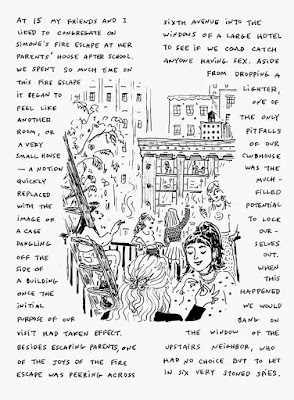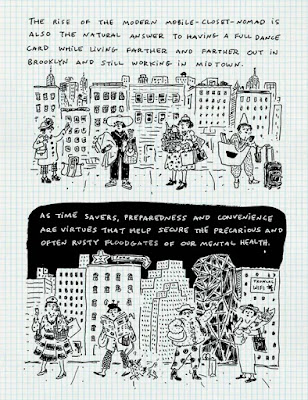Monday, 30 November 2020
Bound Art Book Fair
Thursday, 26 November 2020
Interview Layout
Wednesday, 25 November 2020
Zine Layout Experiment
Response from Collletttivo
Visual Essay Research: Visual Insporation
Visual Essay Research: Useful Work versus Useless Toil
http://www.mottodistribution.com/shop/msheresies-2-rietlanden-women-s-office-on-useful-work-versus-useless-toil.html
The magazine’s main text is a remediation and republishing of the lecture “Useful Work versus Useless Toil” given by William Morris in 1884, accompanied by text and image material from the book The Sisters’ Arts, which examines the working relationship of sisters Virginia Woolf (writer) and Vanessa Bell (painter). This issue continues the project of the series’ first installment—Conditions for Work: The Common World of Women—to investigate the topic of work and the possibilities of collaboration from a feminist perspective.
Similarly to the work of of Joana Avillez, I am really inspired by the layout f this visual essay - and I find it to be really similar to IFILA! in that the text and image take up almost all of the page. There is not a lot of rom for negative space - they're using up as much as they can.
I learnt in my research for my essay that ecological design should be function over form, and I think that by accident designers of publications like these are doing this. The function of the object is to inform readers about a topic- so not a lot of blank negative space is needed.
Visual Essay Research: Ether McManus
https://esthermcmanus.co.uk/Elsewhere
"In collaboration with the Institute of Historical Research and Senate House Library, I was part of the Stray Voices project which aimed to “stimulate insight into the buried stories of homeless men and women whose voices remain silent or unheeded within the historical record”.
To document some of the activities and scholarship from this multifaceted project, I produced the pamphlet Elsewhere, which brought together academic research, archival materials and documentation of a public walk and workshop. Through my pamphlet and workshop I was keen to explore how homeless- ness has been discussed in the UK over several centuries, and to highlight how current social debates and policies have their roots in the past."
Looking further into this zine-style of documentation, I am inspired by McManus' interesting way of showcasing archival imagery and photographs. I really like the way that she visually communicates the maps and grids, and how these relate to the accompanying words in an informal way.
I think that within my own publication, I want to play with the balance between a hand-done, informal feel and a more serious tone. I think it also depends on the tone of voice of my essay, it highlights the serious effects on the environment, however also comes to an uplifting and optimistic conclusion.
Visual Essay Research: Joana Avillez
I'm keen to use my essay as the content for my physical publication. I think that it makes perfect sense, creating a physical outcome that perfectly exemplifies the subjects discussed within the essay. In a way, the words and physical outcome will inform each other. In preparation, I want to do some research into visual essay, and how essays have been published in the past.
Module Evaluation
This module has been really positive for me. I'm so glad that I chose the issue that I did, because I felt passionate and motivated the ...
-
I resized my InDesign pages to he correct size and did a small print run of a couple of pages to identify any issues. The main one being ver...
-
- Attempting to continue with current theme by developing a anthropomorphised fruit character - This was interesting in theory...





















































